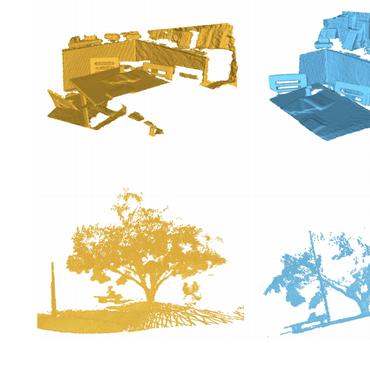3D Point Cloud Matching
8 papers with code • 0 benchmarks • 3 datasets
Image: Gojic et al
Benchmarks
These leaderboards are used to track progress in 3D Point Cloud Matching
Latest papers
Lepard: Learning partial point cloud matching in rigid and deformable scenes
We present Lepard, a Learning based approach for partial point cloud matching in rigid and deformable scenes.
Human Correspondence Consensus for 3D Object Semantic Understanding
Semantic understanding of 3D objects is crucial in many applications such as object manipulation.
LCD: Learned Cross-Domain Descriptors for 2D-3D Matching
In this work, we present a novel method to learn a local cross-domain descriptor for 2D image and 3D point cloud matching.
Fully Convolutional Geometric Features
Extracting geometric features from 3D scans or point clouds is the first step in applications such as registration, reconstruction, and tracking.
3D Point Capsule Networks
In this paper, we propose 3D point-capsule networks, an auto-encoder designed to process sparse 3D point clouds while preserving spatial arrangements of the input data.
The Perfect Match: 3D Point Cloud Matching with Smoothed Densities
Our approach is sensor- and sceneagnostic because of SDV, LRF and learning highly descriptive features with fully convolutional layers.
3D-CODED : 3D Correspondences by Deep Deformation
By predicting this feature for a new shape, we implicitly predict correspondences between this shape and the template.
Robust Point Set Registration Using Gaussian Mixture Models
Then, the problem of point set registration is reformulated as the problem of aligning two Gaussian mixtures such that a statistical discrepancy measure between the two corresponding mixtures is minimized.

 DeformingThings4D
DeformingThings4D
 2D-3D Match Dataset
2D-3D Match Dataset
 4DMatch
4DMatch
